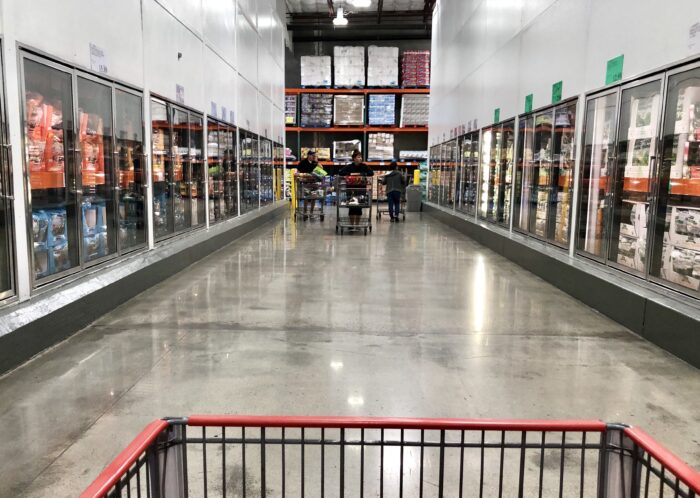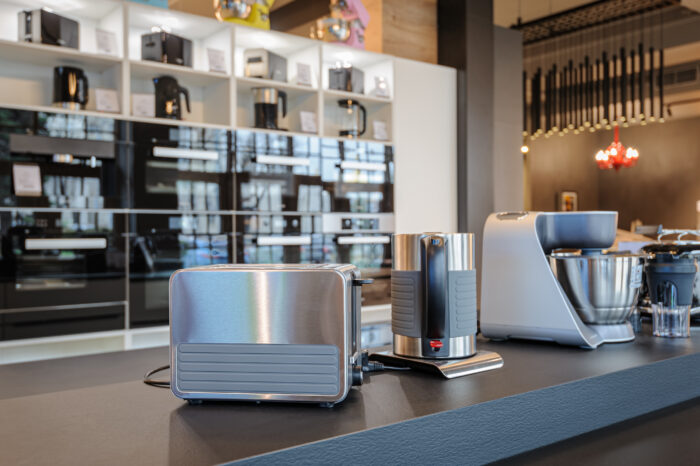A well-executed retail audit can reveal important data about the shelf, staff performance, and customer experience. This data can be instrumental in making informed decisions to drive your sales and enhance your brand reputation. However, harnessing and interpreting this data can be a challenge without the right tools and expertise.
This is where Wiser’s Retail Intelligence can play a pivotal role. Wiser’s mobile crowd is your eyes and ears inside stores for real-time, affordable insights into visual merchandising, the shelf, shoppers, promotions, and more. Use crowdsourced mystery shoppers to support your field teams and capture critical data at scale. The question is, what’s the ideal retail store audit for your business?
Here are some Wiser insights on best practices for different channels when planning a retail audit:
Mass-Market Retailers
- Common stores that many shoppers frequent, so it’s easier to get a wider array of data.
- Flexible survey lengths, can be longer if necessary.
- Keep your audit objective-based and in specific store areas to increase accuracy of results.
- Good channel for associate evaluation. However, some retailer associates are trained specifically by brands
- Focus on category audits and share of shelf. Every brand wants to make sure they’re getting their own fair share of space.
- Best areas to focus on are merchandising and display compliance, associate knowledge and recommendations, shelf execution, and shopper sentiments.

Grocery Retailers
- Ideal audit surveys should consist of 25 to 30 questions and photos.
- Often photos of displays, promotions, and the shelves are more helpful than individual data points.
- Keep your audit objective-based and in specific store areas to increase accuracy of results.
- If brands have many SKUs, try to scale back and focus on key SKUs or the highest and lowest performing SKUs to gain more pinpointed information.
- Check in on employee performance when it comes to out-of-stock items. Are they restocking and fixing displays when they see a problem?
- Best areas to focus on are merchandising and display compliance, shelf execution, and shopper sentiments.
Club Retailers
- Because these stores typically require a membership, it can be harder to achieve a wide array of data.
- Primary focus on merchandising-based display audits, since most items in these stores sit on pallets that could contain multiple brand components.
- Displays can see high damage rates due to store set up, so there should be a high focus on monitoring this issue.
- Audits can be successful at 25-30 questions and beyond.
- There should be a high emphasis on placement in this channel. Are your items on an endcap, a shelf, or an island display? Are your items within arm’s reach?
- Best areas to focus on are merchandising and display compliance, shelf execution, competitive and category insights, and shopper sentiments.

Convenience Store Retailers
- Small store format makes it harder to perform in-store audits discreetly.
- These stores often have a higher rate of associate attentiveness because they are so small. This makes asset protection and display compliance easier to manage.
- Lines for check-out can often block key areas, which makes it more difficult for brands to capture photos and information in those spaces.
- It is nearly impossible to capture clear pictures of the front of store, check-out, and hot food/deli areas due to high traffic.
- Best areas to focus on are shelf execution, competitive and category insights, and shopper sentiments.
Drug Store Retailers
- Hard to assess associate knowledge and recommendation because these stores are usually medium-sized and don’t have a high number of employees on the floor.
- Audits should be focused on merchandising and category insights.
- It’s important to keep in mind that these stores often have some products behind locked boxes. This means that capturing photos of barcodes or product labels is nearly impossible.
- Large categories such as makeup and beverage should be limited in scope.
- Best areas to focus on are merchandising and display compliance, shelf execution, associate knowledge and recommendation, and shopper sentiments.
Dollar Store Retailers
- Merchandising should be a key area of focus for brands in these stores.
- Compliance audits can be difficult due to smaller stores and eclectic shelving.
- Great audit opportunity for brands who have a target demographic, such as cost-sensitive shoppers. Audits are an opportunity to get data on “white gaps” and understand how lower prices might affect brand perception.
- The best areas to focus on are shelf execution and shopper sentiments.

Example Use Cases
Here are some examples of how Wiser has successfully helped real-world brands improve and streamline their retail audit processes.
Use Case No. 1: Candy Brand
A candy brand was grappling with significant issues related to visibility and data accuracy in their retail stores. They expressed the need for a comprehensive view of their front-end registers to better understand the distribution and points of disruption of their core and extended range of products. On top of this, they needed competitive category information from the transaction zone and required clear photographs for accuracy and review. However, their initial request posed logistical problems due to high-traffic areas and the impracticality of examining every register for an extensive list of SKUs.
Recognizing these challenges, Wiser Solutions suggested a tailor-made retail store audit process.
This involved reducing the number of registers to capture, based on the customer’s assertion that their shelf set inventory is expected to be the same every three registers. This strategy not only streamlined the audit process but also ensured a representative estimate of average availability, thereby satisfying the customer’s requirements.
Through this audit, invaluable data was collected that helped the candy brand to understand their product distribution more coherently. By adopting Wiser Solutions’ recommended best practices for conducting retail audits, the brand was able to achieve a simplified, accurate, and efficient audit process, demonstrating the transformative potential of a well-executed retail audit strategy.

Use Case No. 2: Appliance Brand
A leading appliance brand was encountering challenges in maintaining the quality and availability of its innovative blender displays. These units, with their numerous components and varied flavor offerings, are substantial contributors to the brand’s customer experience. However, the brand found it difficult to monitor the status of these displays, availability of different flavors, any damage, and pricing consistency across numerous locations.
To counter these challenges, the brand initiated a comprehensive retail store audit process. The process was designed to gain insights into their product distribution, identify potential issues with the product, and strategize effective solutions to enhance the customer experience. The audits were performed repetitively, ensuring consistency in audit results and reliable trend data.
The resulting data from the audits provided the appliance brand with valuable insights. They were equipped with detailed information about the display status, availability of flavors, and any detected issues with the blender machines. More importantly, they were able to comprehend the factors that might negatively impact the customer experience. This information proved instrumental in enabling the brand to rectify issues promptly and ensure that their products are always available and in optimum condition for their customers.

Use Case No. 3: Snack Brand
A snack brand was facing a challenge in tracking their top competitive SKUs at warehouse retailers. They needed insights into product presence, competitor’s flavors, and types available in the same space. However, they were finding it difficult to get accurate data. The brand assumed they had distribution in all the stores on their list but were having issues confirming these assumptions due to discrepancies in what was found at each location.
The brand needed a comprehensive retail store audit process to gather valuable data on both their products and their competitors. They sought to understand the fluctuating reality of their product presence in stores, and to discern any potential differences between their distribution list and the actual in-store presence. They also wanted to investigate a few stores in each region every month to collect data there. This audit required quantitative data such as pricing information and qualitative data such as photos and details on flavors present.
Wiser Solutions helped the brand to mitigate these challenges. Using Wiser’s Retail Intelligence tool, it was discovered that while the product may have been in the warehouse, it was not on the store floor, leading to discrepancies.
Through candid communication and proactive thinking, Wiser Solutions was able to successfully meet the customers’ expectations, delivering accurate and valuable data. This case offers a demonstration of how effective a thorough and tailored retail audit process can be in delivering insights on product presence, pricing, and competitor information. The brand was able to leverage this data to make strategic decisions, improving their presence and performance on the shelf.

Best Practices for Your Retail Store Audits
Adopting a systematic and thorough retail store audit process is crucial for ensuring retail success. By implementing best practices such as planning and scheduling regular audits, leveraging technology for data collection and analysis, training auditors effectively, and prioritizing corrective actions, retailers can enhance their store’s performance significantly. This approach to auditing not only helps in identifying operational inefficiencies but also paves the way for improved customer experience and increased sales.
Remember, the goal of a retail audit is to ensure consistency, maintain the highest standards of retail execution, and drive continuous improvement. Embrace these best practices in your retail audit process, and you’ll be well on your way to creating a retail environment that’s efficient and highly profitable.
Visit Wiser.com today to learn more about Retail Intelligence and how it could help your own business with audits.














